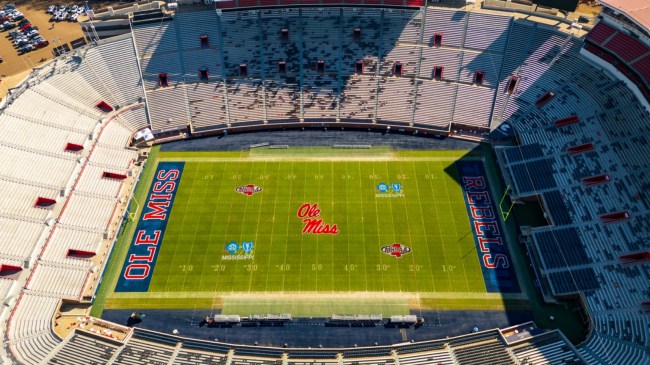
iStockphoto
The NIL era has fully engulfed NCAA athletics allowing players to openly market their value to competing programs. With little regulation on the guidelines surrounding these NIL practices, recruiting and tampering have run rampant in big-time sports.
A focus has been placed on college football, where universities and donors throw large sums of money in the direction of top recruits with hopes of securing high-level commitments to improve the on-field product. In many cases, the highest bidder comes out on top!
The Wild, Wild West as some have called it, there are no rules! And when combined with the transfer portal, it’s almost become a deterrent for established coaches around the sport.
Many are dipping at the first sign of NFL interest, no longer interested in catering to the monetary demands of student-athletes, or their agents.
The frustrations are warranted in many cases.
Think about paying top dollar for a No. 1 recruit. He gets to campus as a freshman, doesn’t like his position on the depth chart, enters the portal, and bails for another high-paying rival. No return on investment!
Or how about those Group of Five and mid-level P5 programs that spend three seasons developing a diamond-in-the-rough’s talent only to see him jump at big money for a more well-known competitor?
No one is saying paying players is a bad thing! But there have to be some sort of bumpers put on the current product. What that answer is, we still don’t know.
Options are there – going back to a transfer penalty year or locking players into contracts – but that opens up a whole other can of worms entirely!
While some coaches are bolting for the pros, others are left either complaining about their current situation or begging fans for more money.
Ole Miss HC Lane Kiffin has been adamant on reeling things in in regard to NIL. While he’s done his best to embrace the new landscape, he still calls the current setup “a disaster.”
“It just probably sounds strange to a lot of people for me to say ‘disaster’ when we’re out there maximizing [NIL] as well as you can… But to me, that tells you how much of a disaster it is… I’m still telling you it’s a disaster even though it benefits us at Ole Miss a lot.”
Unfortunately, it doesn’t seem likely to slow down soon.
The NCAA won’t investigate NIL collectives.
It attempted to take down Tennessee over its recruitment of QB Nico Iamaleava, and failed miserably. Rather than back down, the Vols stood tall by calling out the NCAA on its laissez-faire outlook when it came to NIL practices.
You can’t enforce a rule you never implemented in the first place!
After losing a legal battle, the NCAA admitted defeat.
According to a letter from NCAA president Charlie Baker sent to member schools, the NCAA is pausing and not opening new investigations involving third-parties/collectives for NIL-related activities as a response to the TN-VA lawsuit.
Here’s the letter obtained by @YahooSports. pic.twitter.com/CQyN1mN7QH
— Ross Dellenger (@RossDellenger) March 1, 2024
While a win for the program looking to skirt NCAA penalty, that ruling will likely continue having a negative effect on athletic departments, not just on the field, but away from it, too.
Ole Miss AD details NIL effect on department initiatives.
Keith Carter talked about a shelved renovation plan for Vaught Hemingway Stadium in Oxford. He says paying players NIL compensation has taken away from other areas.
“It’s on the shelf right now,” Carter said when asked about the renovation. “We obviously launched that campaign just prior to NIL really becoming a thing. When we saw where the landscape was going, we decided, you know, that’s a huge project… probably close to $300M.
“We still have it. We know right where it is on the shelf. We’re gonna come back to it someday. It’s a project that we feel like is important, but we’re just not in a place to do that right now until we find out where this college athletics landscape is going to land.”
Ole Miss’ AD recently discussed how the need for NIL $ (and potential direct revenue sharing with athletes in the future) has affected plans to renovate the football stadium.
We’ve seen a number of ADs say the same thing now.
Athlete comp is taking precedence over facilities. pic.twitter.com/VTwR0aXVm7
— Mit Winter (@WinterSportsLaw) March 6, 2024
No one’s really sure of where this thing will end up, and until it does, we might expect a halt on some of those fancy stadium or football facility facelifts seen prior to the NIL era.
Pay the players first and worry about the rest later!
Ole Miss certainly did that this offseason, landing one of the top transfer portal classes in the country – though we now know at what expense.
That’s what it takes to compete in the new world of college sports.